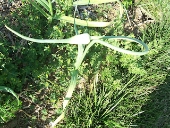




















USDA Hardiness Zone 9a
Subtropical/temperate, Average annual rainfall of 61.94", hot and humid!









Highland Hills Winery, Ramona, California
www.highlandhillswinery.com








Highland Hills Winery, Ramona, California
www.highlandhillswinery.com




Matt McClellan wrote:
Yes, if you have healthy growth, then most likely you don't have a problem at the surface. (note: at the surface) I would recommend heavy mulching/amending/adding and building soil, and don't disturb the subsurface unless you have to. Nature will tell you whats going on. Pay attention to plants that have deep tap roots, if they don't survive in a certain area, note that, you may have a problem 2-3-5+ feet down.
















Gilbert Fritz wrote:
Do worms indicate anything about heavy metal contamination?




Gilbert Fritz wrote:Hello Everyone,
Thanks for the answers.
I looked at the vetiver grass, but I don't think it would work for me. For one thing, I doubt it would tolerate a zone five desert, but correct me on this if I am wrong.
Secondly, and more importantly, it leaves all metals on site, waiting to contaminate anything else which gets planted. True, it would slowly build organic matter in the subsoil, but so would a lot of other plants. (Alfalfa, say.) And there does not seem to be anything in my soil that will kill plants; weeds seem to grow very well, and there are plenty of worms in the soil.
Do worms indicate anything about heavy metal contamination?
















Be most excellent to each other.

|
I met your mom on a Carribean cruise and she said you would help me and this tiny ad:
Rocket Mass Heater Resources Wiki
https://permies.com/w/rmh-resources
|



